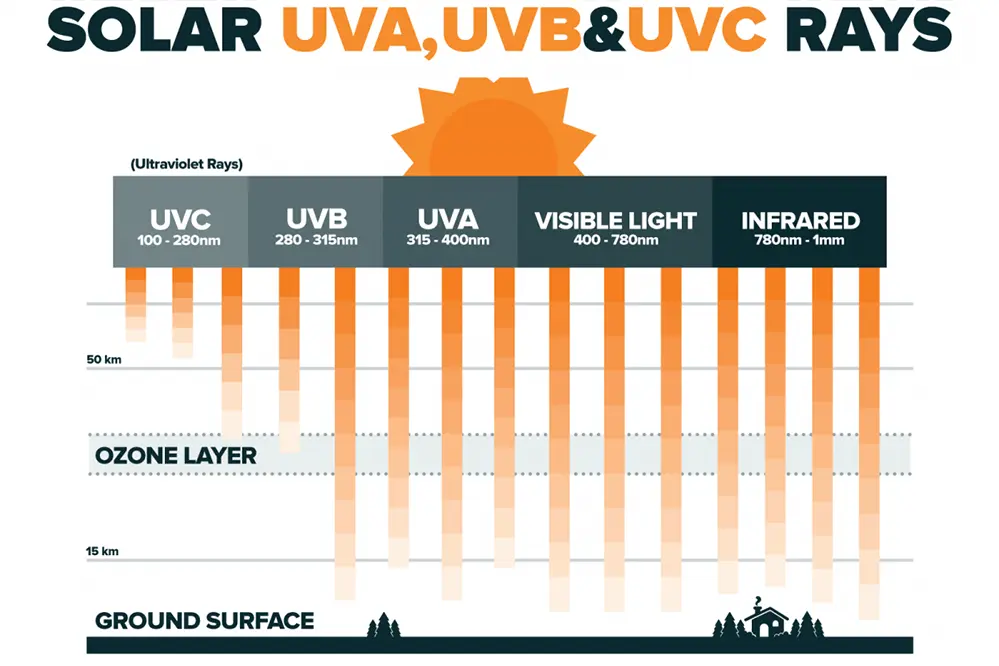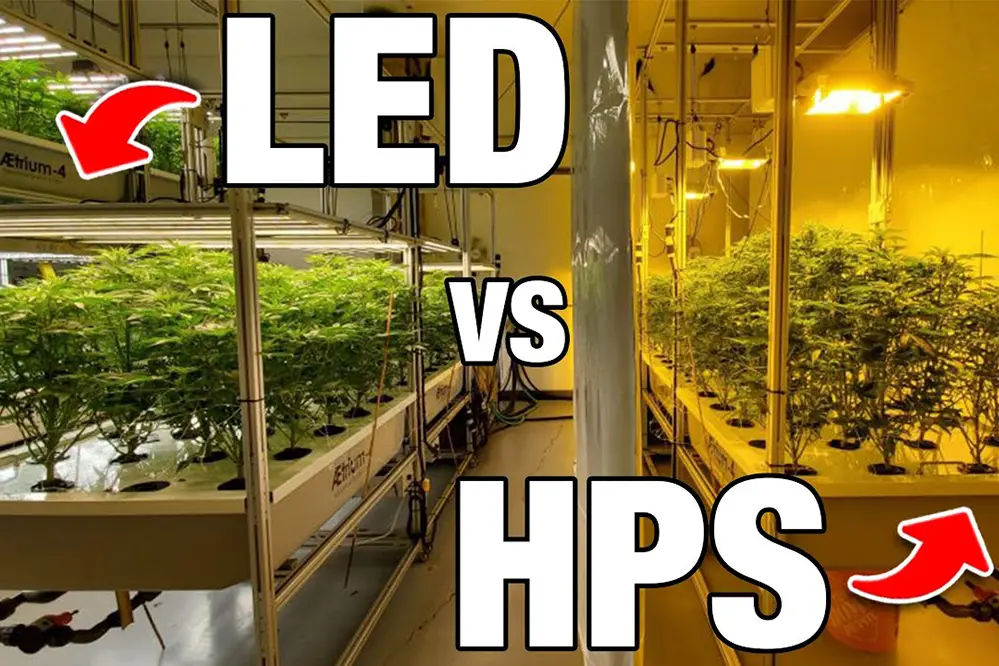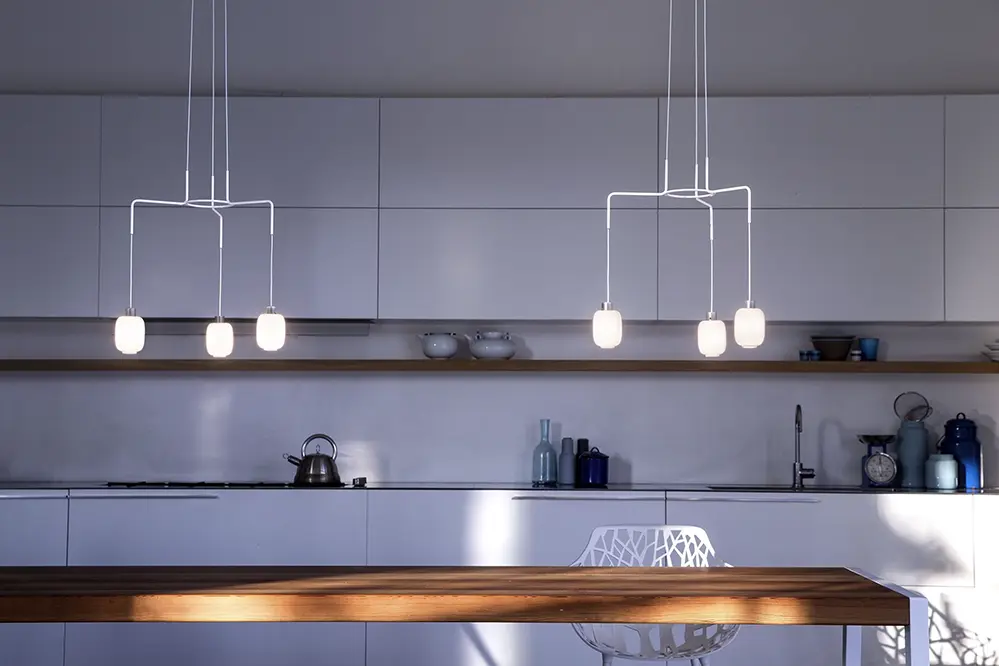Unlock the full potential of your LED lighting system with expert guidance on photocell compatibility. Our insights will empower you to make the best choices for efficient and reliable illumination.
LED lights require specific photocells designed for their unique electrical characteristics to ensure optimal performance and prevent issues like flickering or reduced lifespan.
Dive deeper into the world of LED and photocell compatibility to enhance your lighting setup’s efficiency and longevity. Discover practical tips and solutions for seamless integration..
Understanding LED Lighting Technology
The advent of LED lighting has significantly transformed the landscape of illumination in myriad ways.
In recent years, global adoption of LED technology began soaring, marking a monumental shift towards energy-efficient solutions. A light-emitting diode or LED, unlike traditional bulbs, uses a semiconductor to convert electricity into light, which is both more efficient and environmentally friendly.
Furthermore, it’s not just the energy savings that make LEDs remarkable; it’s their extraordinary lifespan that contributes to their allure. With many LEDs capable of lasting over 50,000 hours, this technology not only reduces replacement costs but also cuts down on environmental waste.
The versatility and adaptability of LED lights have made them an attractive choice for various applications. From home interiors to commercial spaces, LEDs offer unparalleled control over brightness, color, and ambiance, creating tailor-made experiences for different settings and preferences.
These attributes discuss why LEDs have become the gold standard in modern lighting solutions. Their potential seems limitless.
What is a Photocell?
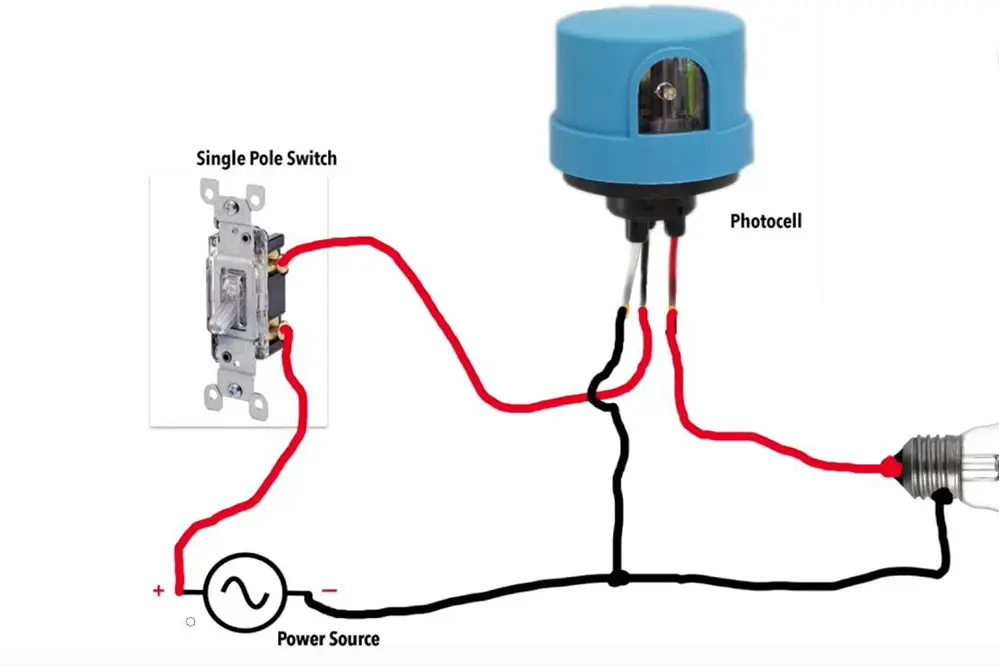
A photocell, also known as a photoelectric cell, is an essential element in automated lighting. It senses light levels.
The device reacts to ambient light, enabling fixtures to automatically turn on or off based on their surroundings. This results in energy conservation.
Photocells detect changes in natural light and respond accordingly, thereby reducing manual operation and increasing efficiency. They are crucial for outdoor lighting.
By integrating a photocell with lighting systems, users achieve greater control, optimize energy use, and maintain consistency in illumination. This enhances operational effectiveness.
Harnessing such technology promises a forward-thinking approach to energy management and sustainability.
Compatibility of Photocells with LED Lights
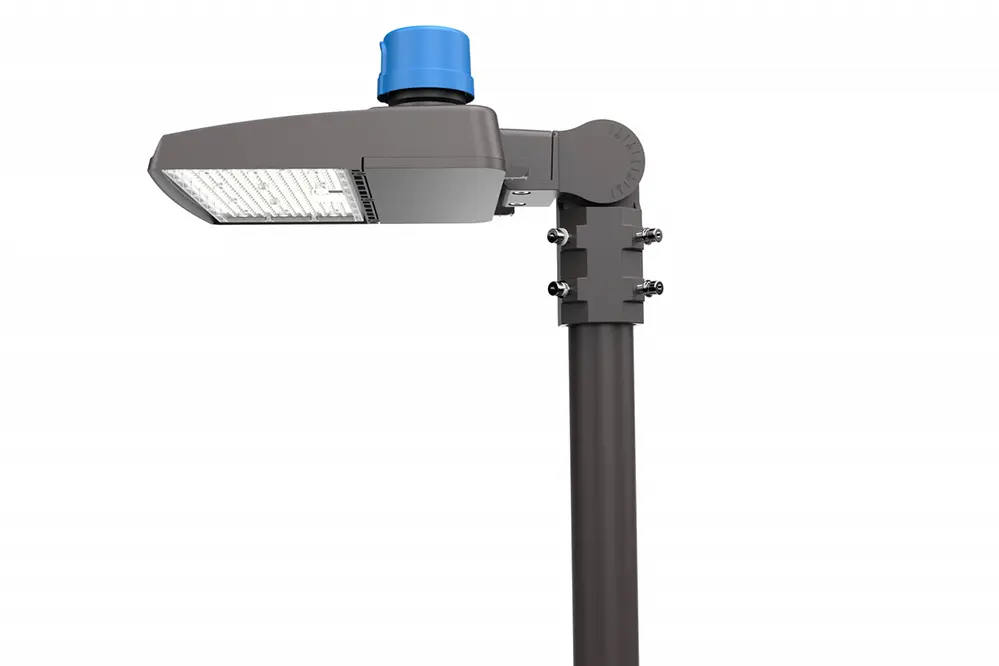
As LED lighting systems continue to revolutionize the way we illuminate our spaces, understanding the compatibility of photocells with these systems is paramount. It’s reassuring to know that LED lights do not require a special photocell.
Many standard photocells work seamlessly with LED technology when properly configured.
The key to successful integration lies in ensuring that the photocell is capable of handling the electrical characteristics specific to LEDs, such as lower wattage and potential inrush currents. By choosing designs that explicitly state compatibility with LEDs, users can ensure reliability, longevity, and peak performance.
This alignment supports energy-efficient solutions and elevates modern lighting systems to new heights, maintaining responsiveness and control without complications. By focusing on adaptability and versatility, standard photocells foster an intuitive synergy with LEDs, offering an accessible pathway to smart lighting solutions across various environments. Embrace this potential, and empower your lighting systems with intelligence and grace.
Importance of Using Compatible Photocells
Choosing the right photocell for LED lights ensures optimal performance and longevity for your lighting systems.
When matched properly, a compatible photocell acts as a vigilant guardian, adapting to the unique demands of LED technology while maximizing efficiency. This harmonious pairing ensures that LED lights operate at their fullest potential, free from the inconsistencies that can arise from incompatible equipment. Specifically designed photocells can manage the lower wattage and distinct power requirements of LEDs, preventing premature failures and inefficiencies.
Without compatibility, there is a risk of diminished lighting quality. An incorrect photocell may struggle to accurately detect ambient light levels, resulting in undesirable on-off cycles which could lead to increased wear and tear on the LED. Ensuring compatibility means investing in reliable lighting that responds predictably and efficiently to changing conditions.
Moreover, aligning photocells with LED systems not only optimizes lighting performance but also contributes to broader sustainability goals. Compatible photocells help reduce unnecessary energy consumption and maintenance costs, fostering a responsible approach to technology investment. This commitment to synergy underscores a forward-thinking perspective, paving the way for more intelligent and sustainable lighting solutions that enhance our environments with confidence and grace.
Do LED Lights Need a Special Photocell?
Understanding LED and photocell compatibility is vital.
LED lights operate differently than traditional lighting. They often require specialized photocells to cater to their unique electrical characteristics. While not all LED systems necessitate such design, utilizing a specially designed photocell enhances the performance of your lighting solution significantly. This ensures that LED lights activate accurately and maintain optimal efficiency.
The benefits of compatibility are crystal clear.
When you choose to integrate the right photocell for your LEDs, you’re making a conscious decision to enhance longevity and effectiveness. This tailored synergy ensures that LED systems function smoothly and are less prone to wear and tear over time.
Ultimately, the journey towards embracing advanced lighting technologies is one of optimism and transformative potential. By understanding the importance of using a special photocell with LED lights, we invest in the kind of confident, responsible innovation that stands at the forefront of sustainable progress. This approach promises bright and energy-efficient lighting solutions for the future.
Differences Between Standard and LED Photocells
Standard and LED photocells differ significantly from each other.
While standard photocells are designed for incandescent lighting systems, LED photocells are specifically engineered to match the unique requirements of LED lighting. This distinction in design and functionality accounts for the varied characteristics of both lighting types, particularly in terms of energy usage and response sensitivity. Consequently, integrating the correct photocell ensures optimal performance for the specific lighting technology employed.
LED photocells offer enhanced energy efficiency.
They adjust to the fluctuating current and voltage demands of LED systems, which differ from traditional lighting. This adjustment is crucial for maintaining consistent performance, delivering precision in light activation, and maximizing energy savings.
Thus, the choice between standard and LED-specific photocells carries broader implications, particularly for those interested in future-forward, sustainable lighting solutions. Choosing LED-compatible photocells highlights a commitment to reducing environmental impact while supporting advanced lighting technologies in their journey towards widespread adoption. As we venture further into the 21st century, staying informed about such technical intricacies empowers us to make inspired, sustainable choices.
Benefits of Using LED-Compatible Photocells
LED-compatible photocells present several advantages, enhancing the efficiency, reliability, and neutral integration of your LED lighting systems.
Primarily, these photocells are designed to precisely match the low power and specific electrical characteristics of LED lights, ensuring smooth operation. This synergy between the photocell and the LED results in reduced wear and tear on the fixtures, extending the lifespan of your lighting solutions and optimizing overall energy usage.
Additionally, these compatible photocells stand as a testament to a refined level of control. By accurately responding to changes in ambient lighting conditions, including dimming capabilities, they ensure that your LEDs operate only when necessary, thereby contributing to significant cost savings over time.
In the grand scheme, the adoption of LED-compatible photocells is a forward-thinking move that aligns with sustainable energy practices, offering tangible benefits both in economic and environmental terms. This innovative approach not only promotes responsible energy consumption but also supports the wider push toward modernization and resilience in lighting infrastructure.
How to Choose the Right Photocell for LED Lights
Selecting a compatible photocell involves understanding its electrical load capacity, ensuring it matches the LED fixtures’ requirements. Examine products with advanced light sensitivity, providing precision in activation. Opt for those with robust weather-resistant features to guarantee reliable performance in varying environmental conditions.
Factors to Consider
Evaluating the compatibility between LED lights and photocells—whether integrated or separate—ensures optimal performance and longevity for your lighting system.
LED bulbs consume up to 80% less electricity, showcasing impressive energy efficiency and environmental benefits.
Consider the voltage and wattage requirements of your LED lights when choosing a photocell, as mismatched specifications can lead to inefficient operation or equipment failure. Ensuring compatibility is essential.
Environmental factors, such as temperature extremes and humidity, also play a critical role—select photocells built to withstand these conditions to maintain uninterrupted and dependable service over time.
Installation Process
Before embarking on the installation of a photocell for your LED lighting system, proper preparation ensures a seamless setup.
- Turn Off Power: Ensure safety by switching off the power supply to prevent electrical hazards.
- Mount the Photocell: Securely position the photocell in an area with unobstructed exposure to natural light.
- Connect Wiring: Carefully connect the wires matching the photocell and LED light systems, using wire nuts for secure connections.
- Test the Setup: Restore power and test the system to confirm the photocell and LED light function as expected.
Performing these steps guarantees an efficient installation, enhancing the longevity and performance of your lights.
This organized approach to installation will ensure you achieve optimal functionality, avoiding potential pitfalls and ensuring a bright future.
Common Issues with Photocell and LED Compatibility
In the pursuit of advanced lighting solutions, a myriad of compatibility concerns may arise. Many traditional photocells are designed for incandescent or halogen lights, and incorporating LED lights may present complications, showcasing a need for carefully selecting matching components.
An issue often encountered is a phenomenon known as “flickering lights.” This stems from a mismatch in the voltage output provided by the photocell, which falls short of the LED’s prerequisites. To ensure harmony, one must consider integrating a photocell engineered for LEDs. Such compatibility not only enhances operational stability but also extends the lifespan of the entire lighting system, creating a pathway to a sustainably luminous environment.
Troubleshooting Tips
When encountering issues with LED lights and photocell compatibility, the first step is to check the manufacturer’s recommendations. Often, a detailed examination of both the photocell and the LED light documentation can reveal pivotal compatibility notes.
Begin by verifying the voltage specifications of both components. A mismatch here is a common culprit in causing flickering. Ensuring these specifications align is critical to avoiding disruptions in performance.
Evaluate whether your LED lights and photocells are designed for similar load capacities. Disparities in their designed load support can result in inefficient operation or even damage.
If your setup is still not functioning as expected, assess the wiring connections. Look for loose or improperly connected wires, which could be impeding optimal current flow between the photocell and the lights.
Sometimes, an overhauling of the photocell itself may be necessary. It might not suffice to merely have an LED-compliant photocell; ensuring it’s updated with the latest technology can preclude myriad issues.
Ultimately, the goal is to harness troubleshooting as an opportunity to enhance your lighting system. Embrace the process as a gateway to achieving unparalleled brilliance and reliability in your LED setup.
Advantages of LED Lights with Photocells
LED lights paired with photocells present a groundbreaking synergy that catapults energy efficiency and cost savings to new heights, proving their entire worth over time.
They radiate an environmentally conscious solution that effortlessly integrates with outdoor lighting systems.
Not only do they foster energy conservation, but these combinations also significantly prolong the lifespan of your lighting infrastructure, providing a robust shield against unnecessary replacements, maintenance, and operational hurdles.
The automated nature of photocells, often enhanced with motion sensors, ensures lights are only active when necessary, vastly minimizing energy waste while simultaneously enhancing security during dark hours. This not only bestows an additional sense of safety but also contributes to aesthetic appeal and practicality. In a world increasingly defined by smart technology, embracing this visionary combination is far from mere modernization—it’s a bold stride toward a sustainable future.
Energy Efficiency and LED Photocells
LED photocells exemplify the future of energy consciousness, joyfully marrying innovation with sustainability in illumination solutions.
In recent years, according to a leading global lighting association, optimizing energy efficiency through the use of LED photocells saw a remarkable growth, with savings skyrocketing for both residential and commercial applications alike.
It’s no mere coincidence that this marriage harnesses efficiency by ensuring energy usage coalesces with necessity, lighting only when needed, thereby making a profound impact on operational economies and resource conservation.
Moreover, the technological advancement in LED photocells has reached a stage where their reliability doesn’t just trail the sought-after mark of 5, achieving seamless daylight detection, but actually transcends conventional expectations.
These advancements suggest a bright future where LED photocells will illuminate energy-saving paths yet unimagined.
Cost Implications of Compatible Photocells
Navigating the cost implications of LED-compatible photocells involves understanding the vast potential of these energy-efficient solutions. Emerging technologies have often sparked concerns over initial expenses.
In recent years, as new technology shapes the lighting industry, the cost of compatible photocells is primarily determined by innovation, allowing for smarter design. Photocells tailored for LED lights are generally available at reasonable price points.
However, it’s essential to note that investing in quality photocells can significantly bolster long-term savings by maximizing energy efficiency. This intelligent investment safeguards against the minimal but prevalent risks of premature component failure.
Despite the variation in upfront costs, buyers find solace in the consistent return on investment. This smart adaptation results in reduced utility bills, diminished maintenance costs, and an enhanced environmental footprint.
Ultimately, the initial financial commitment required for compatible photocells is justified by the substantial long-term savings they facilitate.
Best Practices for Using Photocells with LEDs
Integrating photocells with LED lights offers the promise of enhanced energy efficiency and convenience, streamlining operations with precision.
First, it’s imperative to ensure that the photocell selected is explicitly designed to cater to LED technology. Compatibility is crucial as it ensures optimal performance without the risk of flickering or inoperative lights.
Professionals recommend consulting with manufacturers to verify the photocell’s compatibility and capacity to handle LEDs efficiently. This step prevents the erroneous installation of devices incompatible with LED circuitry.
Moreover, regular maintenance and calibration of photocells are suggested to foster their longevity and consistent performance. This proactive approach minimizes disruptions and maintains the desired ambiance.
By adhering to these best practices, users can confidently harness the benefits of LED lighting, driving both productivity and eco-friendly innovation.
Innovations in Photocell Technology
Today’s photocell advancements, a marvel of engineering innovation, shine ever brighter. Transformations in this field have enabled intelligent lighting systems, allowing precise adaptation to ambient light levels, resulting in significant energy savings and optimized performance.
LED-compatible photocells now incorporate a “smart sensor” technology. These systems are a fusion of advanced data analytics, ensuring exceptional responsiveness. In this era, the sophistication of such tech ensures that LED systems can seamlessly harmonize with a wider array of environmental conditions, truly enlightening any space with efficiency.
Smart Photocell Solutions
Smart photocell solutions transform lighting control.
They offer unparalleled control over your lighting systems. By utilizing smart technology, these innovative solutions provide intelligent adaptation to varying environmental lighting conditions, allowing for seamless integration with LED systems. Consequently, they stand as a testament to the evolving landscape of technological possibilities, ensuring compatibility and superior performance.
Efficiency and reliability are the cornerstones of these systems.
Combining smart photocells with LED lights enables an adaptive lighting experience – where the amount of light adjusts precisely to your needs – while maintaining energy efficiency and eco-consciousness in all applications.
Incorporating smart photocell solutions into your lighting strategy enhances operational excellence, offering futuristic solutions that align effortlessly with the demands in recent years. These solutions are not merely technological add-ons; they are the vanguard of a transformative approach that elevates lighting efficiency across various environments.
Future Trends in LED and Photocell Integration
Looking ahead, the convergence of LED technology and advanced photocells is set to redefine lighting paradigms, unveiling new dimensions and capacities.
One emerging trend is the integration of sensors for real-time data collection, enabling predictive maintenance and enhancing overall system longevity. This intelligent symbiosis allows for dynamic adjustments, overcoming the limited adaptability of conventional photocells. Such advancements spew not only increased efficacy but also open avenues for inventive lighting applications tailored to unique settings.
Moreover, artificial intelligence is emerging as a formidable partner in this space. By harnessing AI capabilities, LED and photocell systems can evolve from mere reactive devices to interactive networks, fostering unprecedented levels of automation and control that were once deemed futuristic.
As LED and photocell technologies continue to evolve, industries and communities can expect tailored lighting solutions that respond deftly to their particular needs, whether for urban infrastructure, residential environments, or cutting-edge industrial applications. This progress enchants us with the promise of possibilities previously unimagined, embodying a realm where innovation meets necessity to improve and brighten our lives thoughtfully and sustainably.
Conclusion
LED lights, known for their energy efficiency and long lifespan, require compatible photocells to operate at their best. As technology advances, the design of photocells has become increasingly specialized to meet the unique demands of LED lighting, ensuring seamless integration and optimal performance.
While conventional photocells might suffice in certain situations, specialized photocells are crafted to enhance the performance and efficiency of LEDs. These advanced devices offer improved control, energy management, and responsiveness, tailored specifically to the distinctive characteristics of LED technology.
The right combination of LED lights and photocells not only opens up new possibilities for automation and customization but also promotes sustainable lighting solutions. This synergy promises innovative advancements, allowing for intelligent and precise illumination, and heralds an inspiring future in the realm of lighting.

